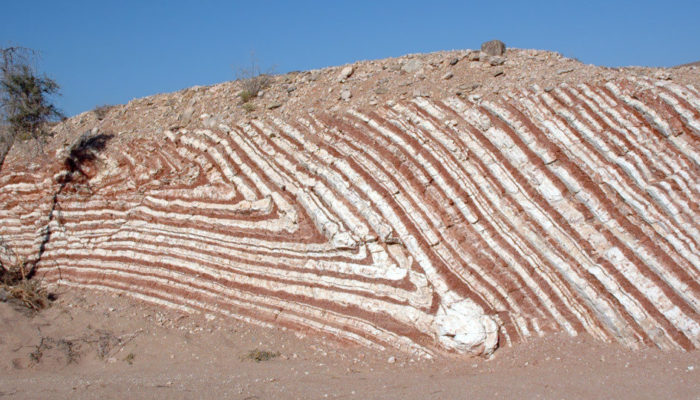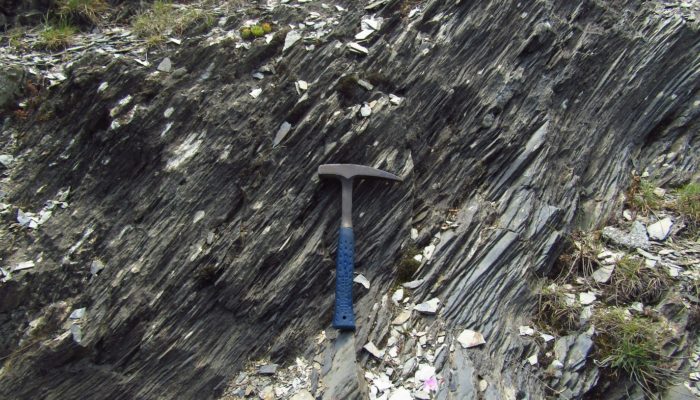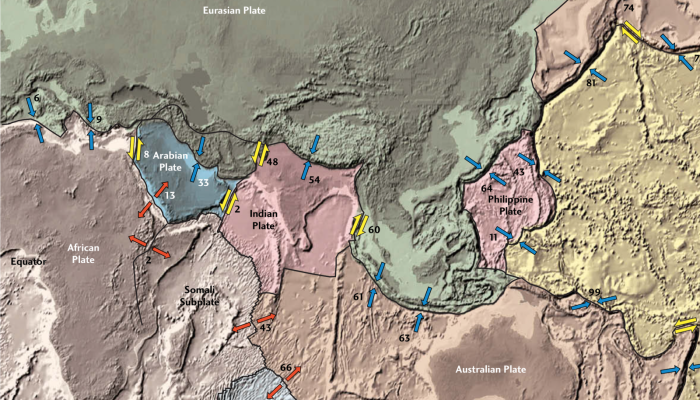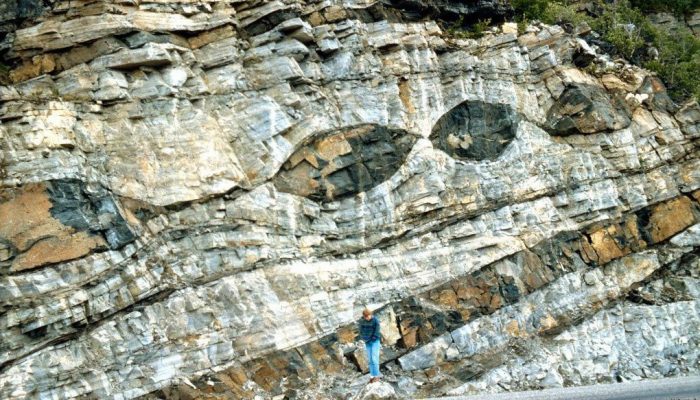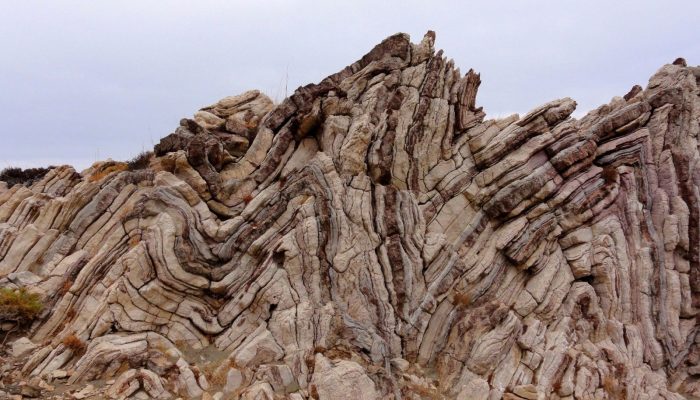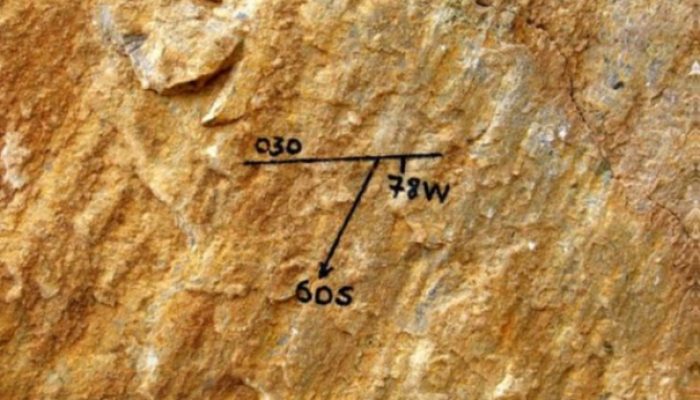Folds are among the most strikingly beautiful structures we can observe in rocks. There are several ways folds may form in rocks. For instance, folds in sedimentary rocks may develop by liquefaction of soft sediments, but the most common way to produce folds – and also my favorite – is by deformation. When rocks are compressed by tectonic forces, layers (or foliations) bend and warp, p ...[Read More]
Features from the Field: Chevron Folds
